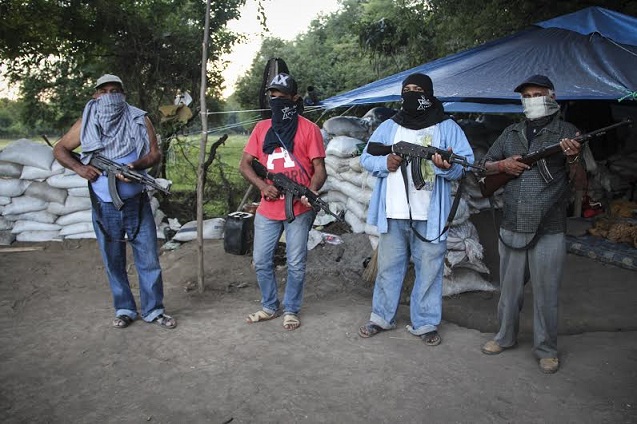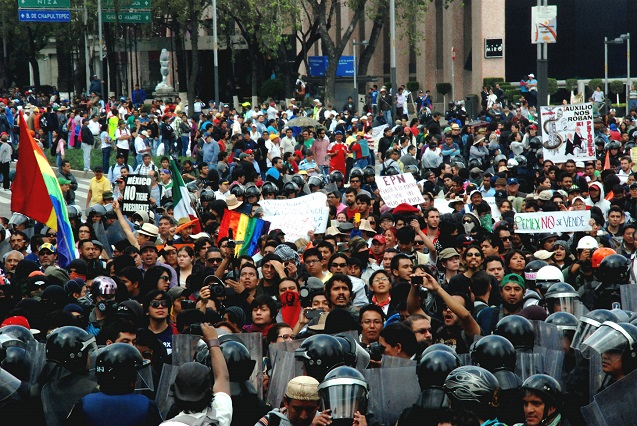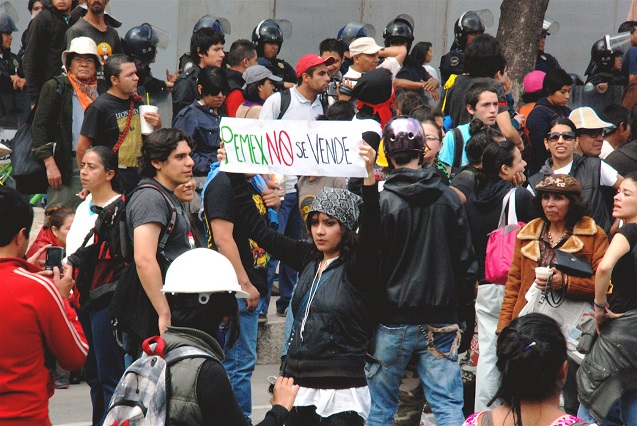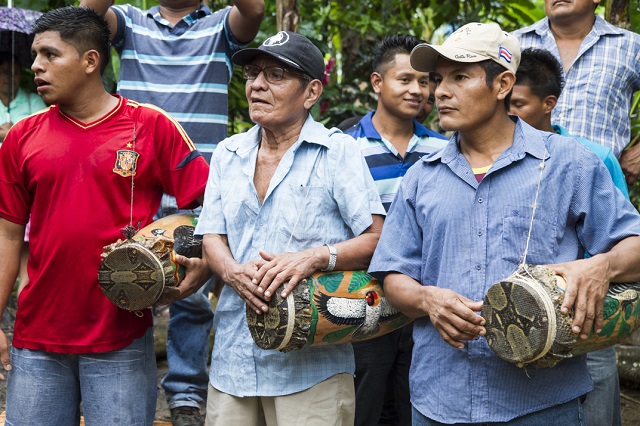In southwest Mexico, Michoacan residents have taken up arms and formed a self-defense militia to protect themselves from violent drug cartels, succeeding where state and federal authorities have failed.
"We have about 25,000 members of armed self-defense groups . . . in less than 15 minutes, we have an army of some 140,000 people ready to go to war if necessary, so we will not surrender our weapons . . ." - General Council of Community Self-Defense in Michoacán, Mexico
The situation in the southwestern Mexican state of Michoacan has been in the headlines of national and international media due to the emergence of more than 20,000 armed men and women who call themselves community self-defense groups. These groups are mainly funded by local businessmen and producers who have decided to donate between 50 - 80 percent of their profits instead of paying that money in extortion or quotas to organized crime.
For 12 years, several cartels have disputed this territory. First, there were the Zetas, who were then displaced by la Familia, which later was replaced by the Knights Templar cartel, which currently controls the region.
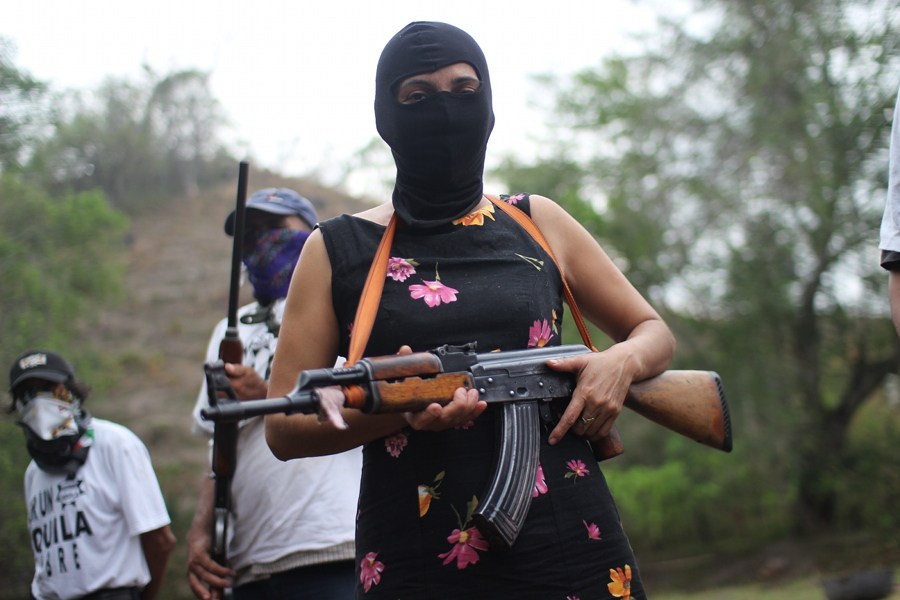
"The situation worsened when these men started to rape girls between 11 and 12 years old. . . . We wanted to do something to stop this, but we were afraid", said Dr. José Manuel Mireles, leading representative of the Michoacan General Council of Community Self-Defense, in an interview with the media network, Subversiones.
The Michoacan self-defense groups formed as a response to the inability of the Mexican government to stop violence that has claimed more than 80,000 lives in less than a decade. Beginning in 2006, then-president Felipe Calderon, backed by George W. Bush, implemented a series of strategies as part of the so-called Merida Initiative, a security cooperation agreement between the United States, Mexico and Central America.
The goal of the Merida Initiative was to combat drug trafficking, transnational organized crime and money laundering. With the support of more than $1.5 billion from the United States, as well as sophisticated weaponry and technology, war was declared on drug trafficking. The result was an actual increase in organized crime, which infiltrated all three levels of the Mexican government.
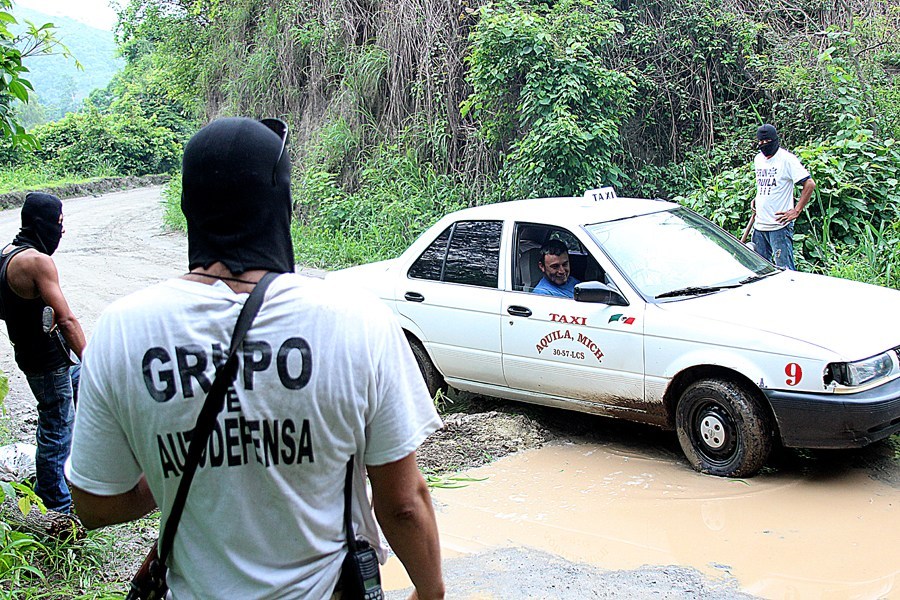
"How long did the training specialists brought in from New York last in the top government office of the capital [of Michoacan]? They were paid for three years, and instead of diminishing organized crime, it grew . . . not one official could fulfill their function, because all the authorities are part of the cartels . . . Why do they want to blind and distract all of us Mexicans with their big machines?" asked Mireles.
To talk about Michoacan is to talk about the atrocities suffered by local populations at the hands of organized crime. These acts range from the collection of fees from the poorest to the wealthiest businessmen, to raping minors, and murdering those who are unwilling to abide by the demands of these criminal groups.
But talk of Michoacan is also talk of a strategic area for the Mexican economy, especially for transnational corporations that benefit from the territory’s resources. It is one of the most important states in agricultural and mining production, where criminal cartels are the main trading link occupying at least 50 percent of the extractive industry in the state. Low prices and often nonexistent trade barriers have attracted companies like U.S. Precious Metals to engage in the exploitation of gold, silver and copper, as well as other multinational companies, or the world´s second-largest economic power, China.
When President Enrique Peña Nieto traveled to China to strengthen trade relations, especially in the mining sector, mining companies had already established links with the Knights Templar cartel to enter the business.
The context of violence is in itself a market for the large defense industry, primarily that of the United States. About 2,000 guns per day enter illegally into Mexico across the border with the United States; likewise, the Mexican government has purchased various batches of weapons from the United States and other countries. Thus, there is a constant flow of weapons that move between organized crime, vigilante groups and the government.
"The logic is drugs and people move north, and what comes back are weapons and dirty money that later filters into the Mexican financial market and then goes back to the United States",
SAID JAMES DAYAN, CONTENT DIRECTOR OF THE MEMORY AND TOLERANCE MUSEUM, ABOUT ARMS TRAFFICKING IN MEXICO.
In 1990, French judge Jean de Maillar, an expert on organized crime, published in his book Un Monde Sans Loi that the activities of the major international mafias will generate the equivalent of about $800 billion, an amount higher than the Gross Domestic Product (GDP) of Spain and equivalent to the GDP of Canada, i.e., 15 percent of world trade. According to the report, nearly $400 billion are earmarked for security services, ranging from buying politicians and officials, guards and private armies, which allow for the free movement of illicit capital, to its end point, which is the reintroduction into the legal economy.
This type of economy, considered by many analysts as a Gross Criminal Product (GCP), seems to be a model that has been applied in Mexico for at least 12 years. The current events in Michoacan are only a microcosm of what happens in over 80 percent of the rest of the country, where there are at least eight cartels: the Zetas, Sinaloa, Beltran Leiva, Arellano Feliz, Gulf, Juarez, the Knights Templar and the Familia Michoacana cartels. They are criminal cartels that not only traffic drugs and weapons, but also sex workers, undocumented migrants, toxic waste, oil and gas, high-tech industry, products that do not pay duties and automobiles, among many others.
Most Mexicans are not aware of the logic of this kind of economy because they find themselves most concerned with confronting and surviving the violence and insecurity of everyday life. So far, the Community Self-Defense groups in Michoacan have recovered several municipalities from cartel control, giving a lesson to the Mexican government. Without sophisticated weaponry and without a bilateral agreement for international cooperation, these groups have been able to clean up a good part of the Mexican state, which the government struggles to do.
Also, they are still awaiting the government arrest of the leaders of the Knights Templar cartel, who have been identified by the citizens themselves. However, the military and police have not acted because they have received no order to do so.
"I have argued that this strategy of putting police in the city is a farce . . . this is a lawless place, where the Templars govern. Yesterday, I stopped in front of a police commander and said, 'That man over there is the one extorting 18 million pesos from the lemon producers.' The police said they could not do anything," stated Gregorio Lopez, a priest of the Archdiocese of Apatzingán. Lopez also set an ultimatum for the government to clean the city of the "evils," or that he would do it himself, even if he had to arm his people with sticks.
So far, the government's objective remains to disarm self-defense groups. Meanwhile other self-defense groups are beginning to sprout up throughout the rest of the country. In the state of Chiapas, communities are forming groups against mining projects due to environmental devastation. In Guerrero, there are community police forces that have been organizing to maintain peace and security for several years. Other groups continue to emerge throughout the country, and the potential of an overall civil war lies dormant.


